17th Century Hague Clock Signed by Pieter Visbagh
CIRCA 1675
Price Enquiry
Follow Us
17th Century Hague Clock Signed by Pieter Visbagh, circa 1675
Unusually small Hague clock made c. 1675 by Pieter Visbagh, who was apprenticed by Salomon Coster. The latter made the first pendulum clock according to the instructions of Christiaan Huygens, the internationally renowned scientist who developed the idea of applying a pendulum to a clock movement.
The delicate ebony-veneered case has a moulded broken arch pediment, whilst the door is flanked by plain half round Doric capital-capped columns on high bases. A traditional star adorns the internal face of the case surrounded by well-chosen cuts of olive in a parquetry fashion. This design of star was also popular in England around this time and was almost certainly introduce by the Huguenots.
The two-day movement is driven by a compact single barrel. The going train has its original verge escapement with a silk suspended pendulum between cycloidal cheeks, also a design by Huygens to improve the trajectory of the pendulum bob. The sides of the backcock are richly pierced and engraved. The striking train is regulated by an external pierced countwheel with a blued steel backing on the backplate to create a lovely contrast; the last hour struck is indicated by Arabic numerals. The striking, which has elaborately pierced striking gates, sounds the hours on a bell inside the case, which has a sound fret in the bottom. The backplate is signed at the bottom by the maker: Pieter Visbagh Fecit Haghe.
The velvet-covered brass dial is hinged on the left hand side, giving access to the movement, which has an almost bronze-like patina caused by age. It has a fine skeletonised gilt-brass Roman chaptering with half hour and Arabic minute divisions. The time is indicated by a fine pair of original gilt brass hands, the hour hand delicately pierced. Below is a shaped and chased signature cartouche, consisting of a crowned coat of arms held by two putti. It bears the maker’s name: P. Visbag Haghe. It is hinged at the top and upon lifting a rectangular hole is revealed through which the pendulum can be activated.
Condition
Good, wear consistent with age and use
Dimensions
H 13.78 in. x W 9.45 in. x D 5.12 in.
H 35 cm x W 24 cm x D 13 cm
PREVIOUSLY SOLD
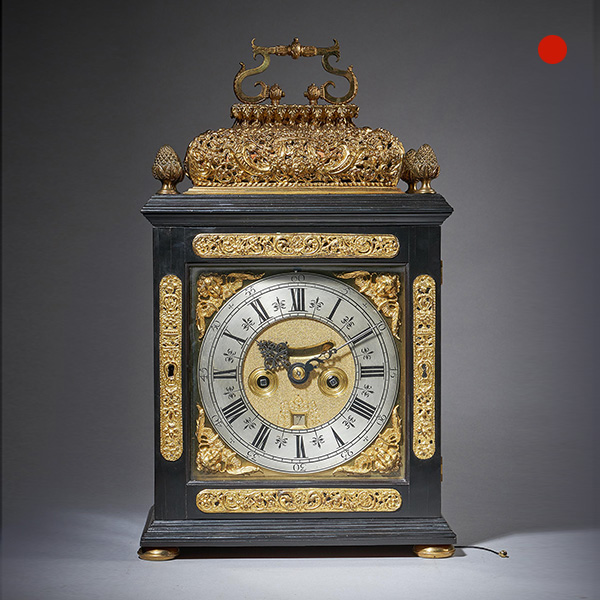
17th century William and Mary Ebony Eight-Day table clock by James Markwick
17th century William and Mary Ebony Eight-Day table clock by James Markwick Sold Follow Us17th century William and Mary Ebony Eight-Day table clock by James Markwick The elegantly proportioned ebony-veneered basket top case has fine cast...
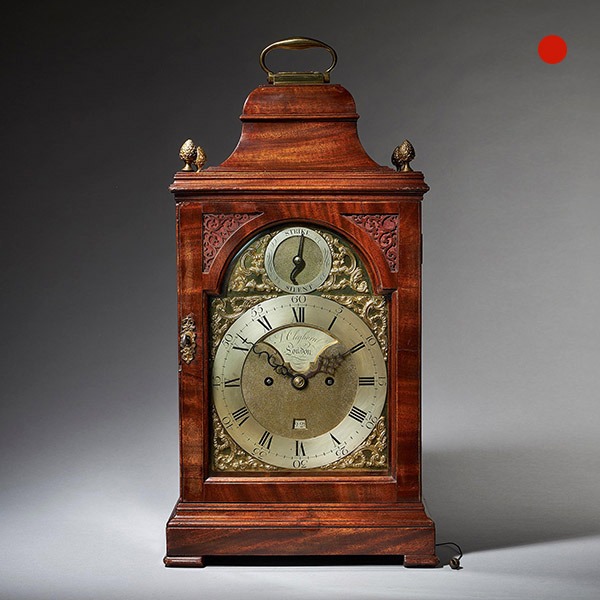
A Fine 18th Century Mahogany Eight Day Table Clock with Trip Quarter Repeat
A Fine 18th Century Mahogany Eight Day Table Clock with Trip Quarter Repeat SoldFollow UsA Fine 18th Century Mahogany Eight Day Table Clock with Trip Quarter Repeat An eighteenth-century English spring-driven mahogany table clock, signed on...

17th Century William and Mary Period Kingwood Oyster Strongbox or Coffre Fort
17th Century William and Mary Period Kingwood Oyster Strongbox or Coffre Fort SoldFollow Us17th Century William and Mary Period Kingwood Oyster Strongbox or Coffre Fort A fine large and rare kingwood oyster strongbox or Coffre Fort, circa...
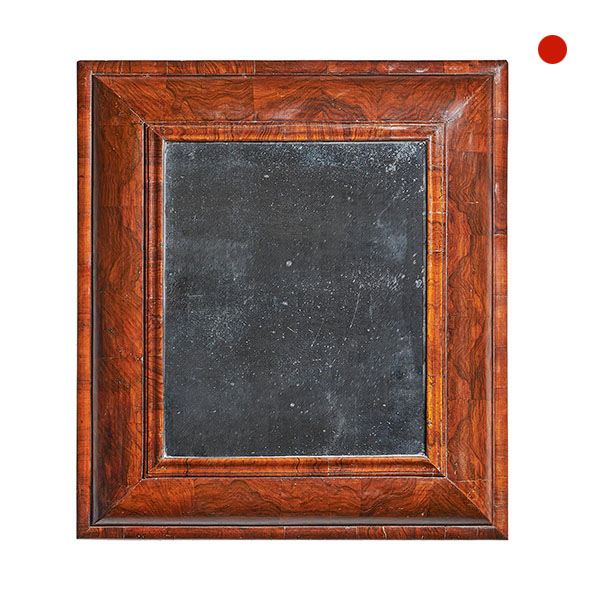
Large 17th Century William and Mary Figured Walnut Cushion Mirror
Large 17th Century William and Mary Figured Walnut Cushion Mirror SOLDFollow UsLarge 17th Century William and Mary Figured Walnut Cushion Mirror The age patinated mercury mirror plate is bordered with a fine cross-grain ogee moulding....
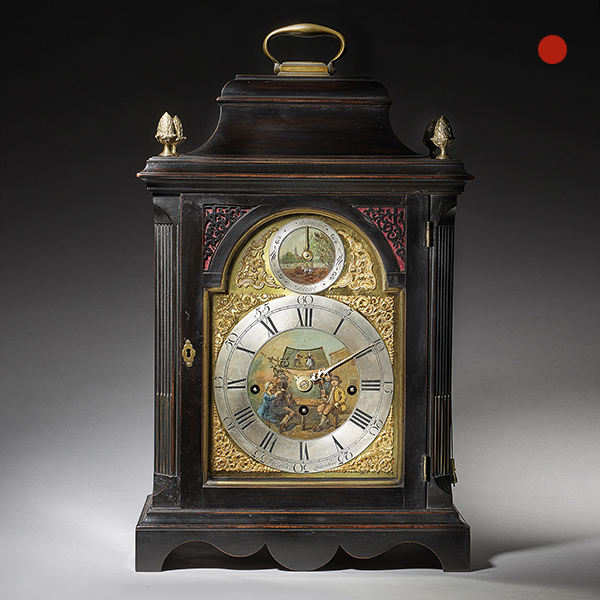
Extremely Rare George III 18th Century Quarter-Striking Bracket Clock
Extremely Rare George III 18th Century Quarter-Striking Bracket Clock SoldFollow UsExtremely Rare George III 18th Century Quarter-Striking Bracket Clock An extremely rare George III 18th century ebonized quarter-striking bracket clock by...

Large George III 18th Century Mahogany Wine Cooler Cellarette or Jardinière
Large George III 18th Century Mahogany Wine Cooler Cellarette or Jardinière SoldFollow UsLarge George III 18th Century Mahogany Wine Cooler Cellarette or Jardinière A fine and large mid-18th century George III oval mahogany cellarette or wine...

17th century William and Mary Ebony Eight-Day table clock by James Markwick
17th century William and Mary Ebony Eight-Day table clock by James Markwick Sold Follow Us17th century William and Mary Ebony Eight-Day table clock by James Markwick The elegantly proportioned ebony-veneered basket top case has fine cast...

A Fine 18th Century Mahogany Eight Day Table Clock with Trip Quarter Repeat
A Fine 18th Century Mahogany Eight Day Table Clock with Trip Quarter Repeat SoldFollow UsA Fine 18th Century Mahogany Eight Day Table Clock with Trip Quarter Repeat An eighteenth-century English spring-driven mahogany table clock, signed on...

17th Century William and Mary Period Kingwood Oyster Strongbox or Coffre Fort
17th Century William and Mary Period Kingwood Oyster Strongbox or Coffre Fort SoldFollow Us17th Century William and Mary Period Kingwood Oyster Strongbox or Coffre Fort A fine large and rare kingwood oyster strongbox or Coffre Fort, circa...

Large 17th Century William and Mary Figured Walnut Cushion Mirror
Large 17th Century William and Mary Figured Walnut Cushion Mirror SOLDFollow UsLarge 17th Century William and Mary Figured Walnut Cushion Mirror The age patinated mercury mirror plate is bordered with a fine cross-grain ogee moulding....

Extremely Rare George III 18th Century Quarter-Striking Bracket Clock
Extremely Rare George III 18th Century Quarter-Striking Bracket Clock SoldFollow UsExtremely Rare George III 18th Century Quarter-Striking Bracket Clock An extremely rare George III 18th century ebonized quarter-striking bracket clock by...

Large George III 18th Century Mahogany Wine Cooler Cellarette or Jardinière
Large George III 18th Century Mahogany Wine Cooler Cellarette or Jardinière SoldFollow UsLarge George III 18th Century Mahogany Wine Cooler Cellarette or Jardinière A fine and large mid-18th century George III oval mahogany cellarette or wine...
YOU MAY ALSO LIKE
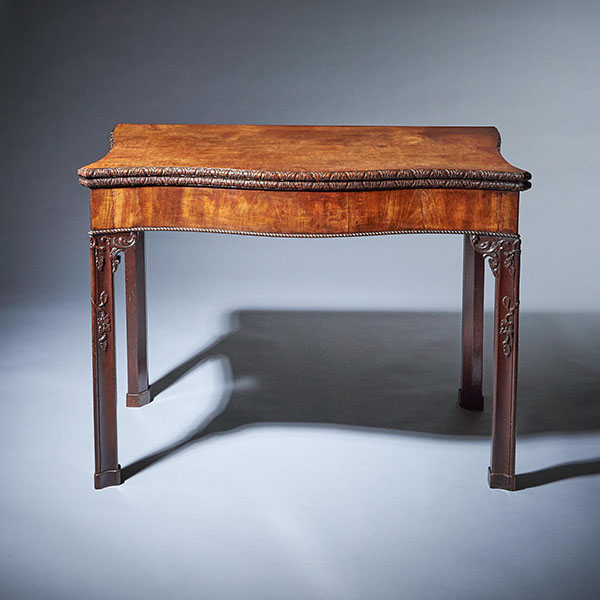
18th Century George III Carved Mahogany Serpentine Concertina Action Card Table
18th Century George III Carved Mahogany Serpentine Concertina Action Card Table £19,800Follow Us18th Century George III Carved Mahogany Serpentine Concertina Action Card Table A bold and impressive George III carved mahogany serpentine...
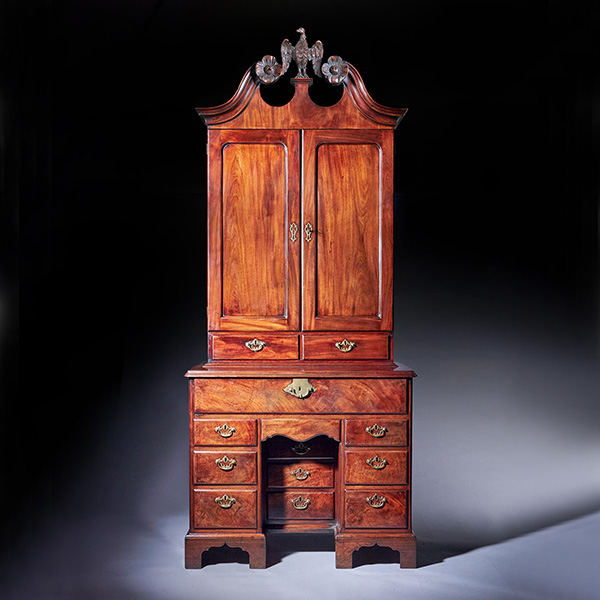
A George II Irish Mahogany Secretaire Kneehole Bookcase Att. C. Hearn
A George II Irish Mahogany Secretaire Kneehole Bookcase Att. C. Hearn £45,900Follow UsA George II Irish Mahogany Secretaire Kneehole Bookcase Att. C. Hearn An original and rare two-part George II 18th century Irish architects figured mahogany...
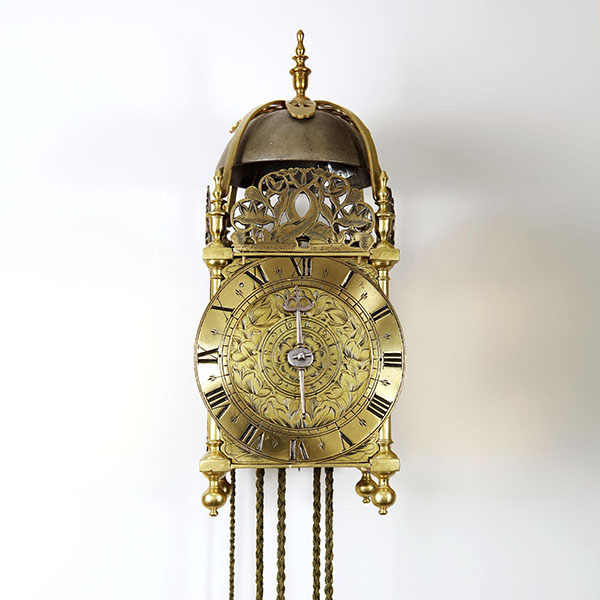
17th Century Lantern Alarm Clock by Johannes Quelch, Oxford
17th Century Lantern Alarm Clock by Johannes Quelch, Oxford £14,000Follow Us17th Century Lantern Alarm Clock by Johannes Quelch, Oxford An English 17th century lantern clock made of brass and iron, circa 1665-1670. The clock consists of going...
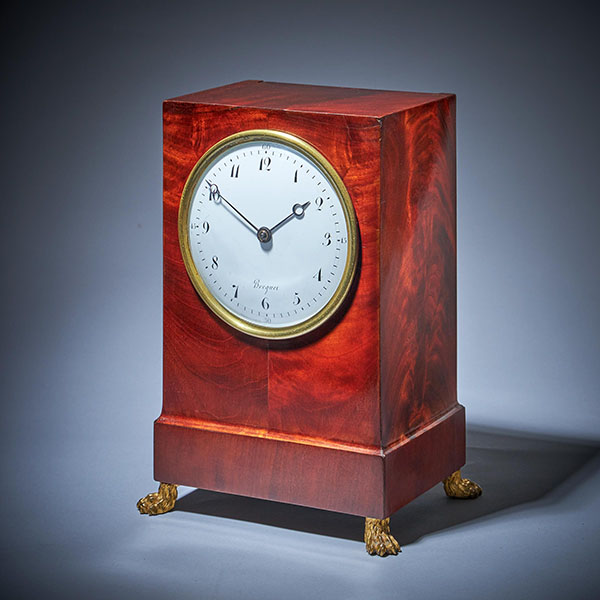
19th-Century Flame Mahogany Mantel Clock by BREGUET Raised by Lion Paw Feet
19th-Century Flame Mahogany Mantel Clock by BREGUET Raised by Lion Paw Feet £23,500Follow Us19th-Century Flame Mahogany Mantel Clock by BREGUET Raised by Lion Paw Feet EXTREMELY RARE MANTEL CLOCK WITH A FIGURED MAHOGANY-VENEERED CASE by A-L...
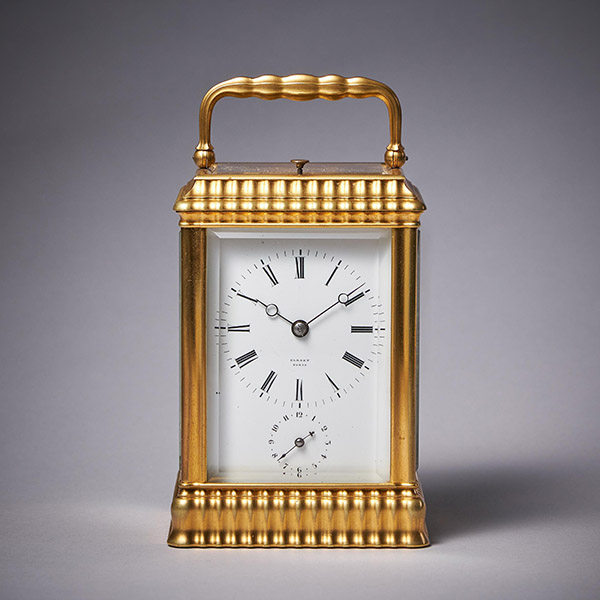
Unusual Ribbed Eight-Day Repeating Striking Gilt-Brass Gorge Case Carriage Clock
Unusual Ribbed Eight-Day Repeating Striking Gilt-Brass Gorge Case Carriage Clock £4,850Follow UsUnusual Ribbed Eight-Day Repeating Striking Gilt-Brass Gorge Case Carriage Clock CaseThe clock has a gilt-brass case which is a variation on the...
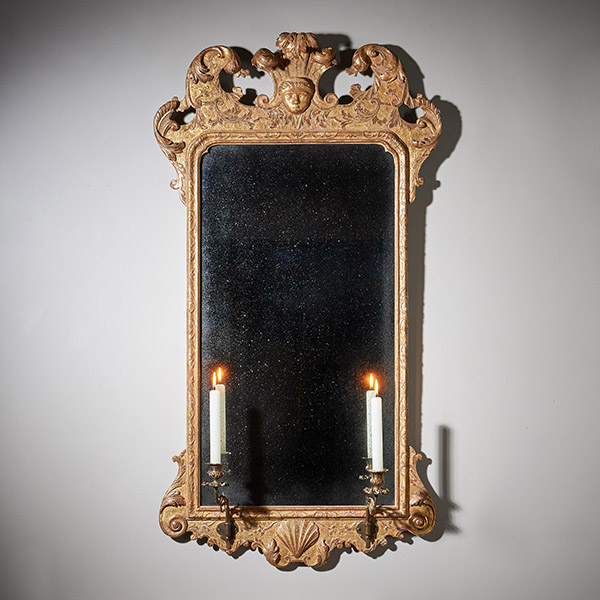
Fine 18th Century George I Gilt Gesso Pier or Console Mirror, Manner of Belchier
Fine 18th Century George I Gilt Gesso Pier or Console Mirror, Manner of Belchier £13,900Follow UsFine 18th Century George I Gilt Gesso Pier or Console Mirror, Manner of Belchier A fine and rare early 18th century George I Gilt Gesso pier or...

18th Century George III Carved Mahogany Serpentine Concertina Action Card Table
18th Century George III Carved Mahogany Serpentine Concertina Action Card Table £19,800Follow Us18th Century George III Carved Mahogany Serpentine Concertina Action Card Table A bold and impressive George III carved mahogany serpentine...

A George II Irish Mahogany Secretaire Kneehole Bookcase Att. C. Hearn
A George II Irish Mahogany Secretaire Kneehole Bookcase Att. C. Hearn £45,900Follow UsA George II Irish Mahogany Secretaire Kneehole Bookcase Att. C. Hearn An original and rare two-part George II 18th century Irish architects figured mahogany...

17th Century Lantern Alarm Clock by Johannes Quelch, Oxford
17th Century Lantern Alarm Clock by Johannes Quelch, Oxford £14,000Follow Us17th Century Lantern Alarm Clock by Johannes Quelch, Oxford An English 17th century lantern clock made of brass and iron, circa 1665-1670. The clock consists of going...

19th-Century Flame Mahogany Mantel Clock by BREGUET Raised by Lion Paw Feet
19th-Century Flame Mahogany Mantel Clock by BREGUET Raised by Lion Paw Feet £23,500Follow Us19th-Century Flame Mahogany Mantel Clock by BREGUET Raised by Lion Paw Feet EXTREMELY RARE MANTEL CLOCK WITH A FIGURED MAHOGANY-VENEERED CASE by A-L...

Unusual Ribbed Eight-Day Repeating Striking Gilt-Brass Gorge Case Carriage Clock
Unusual Ribbed Eight-Day Repeating Striking Gilt-Brass Gorge Case Carriage Clock £4,850Follow UsUnusual Ribbed Eight-Day Repeating Striking Gilt-Brass Gorge Case Carriage Clock CaseThe clock has a gilt-brass case which is a variation on the...

Fine 18th Century George I Gilt Gesso Pier or Console Mirror, Manner of Belchier
Fine 18th Century George I Gilt Gesso Pier or Console Mirror, Manner of Belchier £13,900Follow UsFine 18th Century George I Gilt Gesso Pier or Console Mirror, Manner of Belchier A fine and rare early 18th century George I Gilt Gesso pier or...













